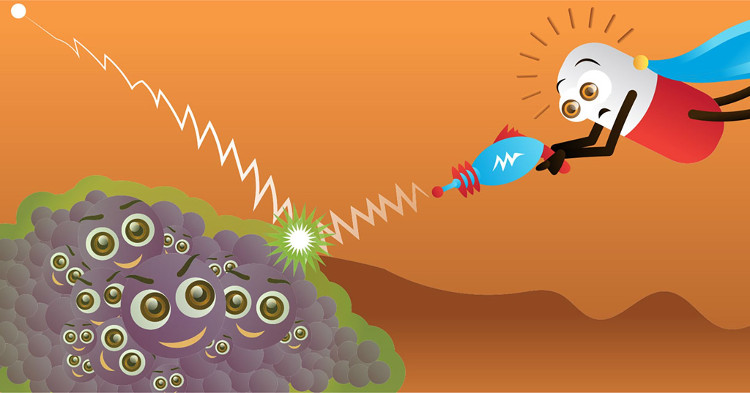Find a mechanism to help bacteria not only resist but also antibiotics
Bacteria are becoming more and more resistant, even the best antibiotics and some types of bacteria even eat drugs.
Because of this, an international team of scientists examined how bacteria became "inert" and consumed antibiotics such as food. From there, they hope to find a new way to combat bacterial resistance.
The rate of antibiotic-resistant bacteria is climbing an alarming level due to abuse of antibiotics as well as overdose. If left unchecked, according to many reports in 2050, the virus will cause 10 million deaths a year, opening up a new dark period of medicine when current drugs are not available. effective. In addition, some types of bacteria show off their resistance to drugs by eating drugs . Researchers come from the Washington University Medical School at St. Louis has done a research study on this issue.

Antibiotic-resistant bacteria are on the rise, due to abuse of antibiotics as well as overdose.
Gautam Dantas, the study author, said: "10 years ago, we faced the fact that bacteria can eat antibiotics and at that time everyone was shocked. But now, everything becomes more meaningful. Because antibiotics are just carbon, and wherever there's carbon, bacteria will find ways to eat it, and we understand how bacteria do this, we can think of ways to exploit this ability from that solves the problem of antibiotics ".
However, the war does not stop within our bodies but also in water and soil thanks to waste from fields and pharmaceutical manufacturing facilities. New research by Washington University focuses on the bacteria that live in these two environments, now they are very resistant to being exposed to drugs as well as environmental properties that are easy to share mobile materials. transmission.
The team studied four types of bacteria in the soil, thriving and eating only penicillin. First, bacteria use an enzyme called ß-lactamase to neutralize toxins - this is also a tactic commonly used by resistant bacteria. They then use special enzymes to separate antibiotics into parts and devour them.
By looking at the gene and investigating the role of the gene in this process, they found that there are three different sets of genes that are activated when the bacteria eat penicillin, but they do not work when the bacteria eat sugar. So the key to decoding the antibiotic's ability to eat antibiotics was found and toxic poisoning was used, researchers said they could technically engineer penicillin-eating E. coli and use them to clean up. The environment has too many antibiotics, such as using drugs in fields or leaking from production plants, thereby slowing the growth of resistant bacteria in general.
However, before antibiotic-eating bacteria could be used as a tool, researchers said they had to find ways to make bacteria eat faster because they took a long time to separate antibiotics. Therefore, in agricultural or industrial waste, bacteria will be difficult to promote their ability to eat again.
- Mechanism of resistance to many bacterial drugs
- Find out the evolutionary mechanism of many deadly dangerous bacteria
- Find new antibiotics under the ocean
- Find the gene that causes bacteria to disable antibiotics
- New antibiotic resistance
- Deadly bacteria in chicken can resist antibiotics
- What are antibiotics and classify antibiotics
- Bacteria 'super' are resistant to drugs when in outer space
- Bad habits of parents hurt the liver and kidneys, endanger children
- Bacteria resistant to two types of prophylactic antibiotics have been found in the United States
- The last defensive layer before the virus takes us back to the Stone Age
- Find out what new antibiotics help overcome drug resistance
 The United Nations' all-human warning: All antibiotics are becoming useless
The United Nations' all-human warning: All antibiotics are becoming useless How did bacteria learn to fight antibiotics?
How did bacteria learn to fight antibiotics? 10 million deaths are one of the startling numbers about 'Antibiotic resistance'.
10 million deaths are one of the startling numbers about 'Antibiotic resistance'. Learn about the phenomenon of antibiotic resistance
Learn about the phenomenon of antibiotic resistance